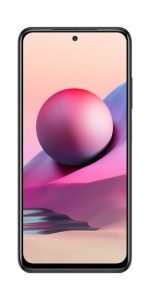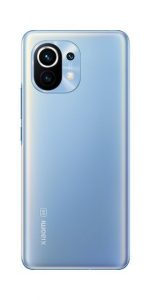With over 16 million customers and a new customer joining every two seconds, it is the world’s largest international mobile virtual network operator. The mission of Lyca Mobile is to bring friends and family from all over the world together. This is our goal, and we intend to achieve it by providing low-cost, high-quality data and voice services in 23 countries.
Since its launch in the Netherlands in 2006, Lycamobile has grown to serve more than 15 million pay-as-you-go customers in more than 100 countries around the world.
Lycamobile is a mobile virtual network operator (MVNO) that operates on the T-Mobile network. The network speeds are comparable to those of T-Mobile. Taxes are levied by Lycamobile on its service plans.
In addition to being the owner of Lycamobile, Subaskaran Allirajah is one of the most generous benefactors to the Conservative Party. Since 2011, the Sri Lankan-born telecoms executive has donated more than £1.3 million to David Cameron’s Conservative Party through his company, Lycamobile UK, which avoids paying taxes by rerouting revenues offshore.
The Redmi Note 10 is a series of Android-based smartphones produced by Redmi, a sub-brand of Xiaomi Inc., that are part of the Redmi Note series. This series will be launched in India and throughout the world in March 2021, and in China in May 2021. It is the successor to the Redmi Note 9 series of smartphones, which was introduced in 2020 and is still in production.
Depending on the market, the Redmi Note 10 5G may be marketed as the POCO M3 Pro or the Redmi Note 10T, among other names. Specifically for the Japanese market, Xiaomi introduced the Redmi Note 10 JE, which is a variant of the Redmi Note 10 5G that has similar specifications to the Redmi Note 10 5G but with a different processor, battery, and the addition of IP68 water resistance.
The Redmi Note 10S, in typical Xiaomi fashion, offers excellent value for money, but this time the company has increased the battery life and graphical performance. It falls short in terms of camera quality and has a lower-quality display than its Redmi Note 10 counterpart.
Here’s a preview of Redmi note 10S by Lyca Mobile:
MI 11
Design-wise, the Xiaomi Mi 11 is similar to the Mi 10, with the front camera placed in the upper left corner as on the previous model. The display of the Mi 11 is made of Corning Gorilla Glass Victus, and the back of the device is made of Corning Gorilla Glass 5 or vegan leather, depending on the configuration. The earpiece is hidden in the phone’s front panel. It is available in two different material designs and five different colours on the back of the phone: black (the default colour), white (the second colour), blue (the third colour), smokey purple (the fourth colour), and brown (the fifth colour). Three of the pieces feature anti-glare glass, while the remaining two are made of vegan leather. Its thickness and weight also differ depending on the materials used to construct the device. The anti-glare frosted glass version weighs 196 g and is 8.06 mm thick, while the vegan leather version weighs 194 g and is 8.56 mm thick.
The side frame of the Mi 11 is made of aluminium alloy, and there is a communication antenna overflow band around the fuselage that is filled with plastic injection moulding that has a colour that is similar to that of the side frame. Noise reduction microphone, infrared emission window, and a top sub-speaker are all located on the upper portion of the frame (integrated earpiece function). In addition to the plus and minus volume buttons, the right side also includes a screen switcher and a power key. With a SIM card slot and ejection jack, as well as a USB Type-C interface and the main speaker openings, all of these features are found in the lower portion of the device. On the left side, there is no doorway. Near the control buttons, the frame becomes wider.
Alternatively, AG-processed glass or a leather-like polycarbonate plastic is used for the Mi 11’s back panel. Despite the fact that the glass-based version of the back cover weighs approximately 2g more than the polycarbonate version, the overall thickness is reduced by approximately 0.5mm. On the back cover, the rear camera group area is contained within a rounded rectangle that extends from the upper left corner of the device. It is shaped like a Nascar racetrack, and it is located on the left side of the camera area with the main camera sensor located on its upper portion and the wide-angle sensor located on its lower portion. An illuminated silver ring surrounds the main camera sensor opening, which protrudes slightly and is reminiscent of the design of the Xiaomi Mi 9, Mi CC9, and other models in the Xiaomi lineup. From top to bottom, there is a silver area on the right side of the racetrack-shaped area, which contains a long-focus macro sensor, an LED fill light, and an auxiliary ambient light sensor. Xiaomi Group’s “XIAOMI” logo, which is the same as the one used on the Xiaomi CC9 series, has replaced the previous “MI” logo in the aircraft’s lower left fuselage corner. The plain leather version also has a metal circular decoration under the logo, which serves as a fixed leather laminate as well as a decorative element..
Here’s a preview of MI 11 by Lyca Mobile:
It provides a decent gaming experience without stuttering thanks to its 5G connectivity and ability to deliver a decent gaming experience. The Redmi Note 10 5G has 6GB of RAM and 128GB of internal storage, which makes it a good choice for multitasking. On the software front, the Redmi Note 10 5G is powered by MIUI 12, which is built on top of Android 11.
The Redmi Note 10 is a series of Android-based smartphones produced by Redmi, a sub-brand of Xiaomi Inc., that are part of the Redmi Note series. This series will be launched in India and throughout the world in March 2021, and in China in May 2021.
Xiaomi owns a majority stake in Redmi, which is a subsidiary of the Chinese electronics company. When it was first announced in July 2013, it was positioned as a low-cost smartphone line. In 2019, it was designated as a separate sub-brand of Xiaomi, producing entry-level and mid-range devices while Xiaomi itself focuses on higher-end and flagship Xiaomi (formerly Mi) devices. Mi phones, like the Redmi series, run Android with Xiaomi’s MIUI user interface on top. The Redmi lineup is divided into three categories: the entry-level Redmi, the mid-range Redmi Note, and the top-of-the-line Redmi K. In addition, the unrelated Mi A Android One series, despite being a part of the Xiaomi Mi lineup’s upper-range, is also positioned in a similar market segment to Redmi devices despite being unrelated to Redmi devices. Compared to other Xiaomi smartphones, the most significant difference between them is that they use less-expensive components, allowing them to be more affordable while maintaining higher specifications. According to a report published in August 2014 by The Wall Street Journal, Xiaomi had a market share of 4 percent of smartphone shipment rankings in China during the second quarter of the 2014 fiscal year. Sales of the Redmi smartphone were cited as a contributing factor to the increase in shipment rankings.
Here’s a preview of Redmi note 10 5G by Lyca Mobile:











